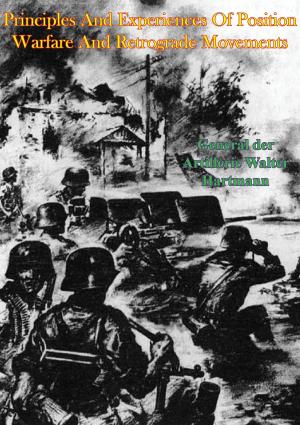Tarnished Victory: Divided Command In The Pacific And Its Consequences In The Naval Battle For Leyte Gulf
Nonfiction, History, Germany, European General, Military, United States| Author: | LCDR James P. Drew | ISBN: | 9781782897187 |
| Publisher: | Verdun Press | Publication: | August 15, 2014 |
| Imprint: | Verdun Press | Language: | English |
| Author: | LCDR James P. Drew |
| ISBN: | 9781782897187 |
| Publisher: | Verdun Press |
| Publication: | August 15, 2014 |
| Imprint: | Verdun Press |
| Language: | English |
The Battle for Leyte Gulf in October 1944 was the largest naval battle of World War II both in terms of the number of ships involved, and the expanse of area the battle covered. The battle was a decisive victory for the Allied Forces, who effectively crushed the might of the Japanese Navy for the remainder of the war. The Joint Chiefs made the decision to keep command in the Pacific divided in the early months of the war. The Joint Chiefs were presented with opportunities to resolve this problematic command structure as the war progressed, but they chose to perpetuate the division. This decision, directly contributed to disunity of effort, differing objectives, poor communication, and tragically, unnecessary loss of life during the Battle off Samar.
The Battle for Leyte Gulf in October 1944 was the largest naval battle of World War II both in terms of the number of ships involved, and the expanse of area the battle covered. The battle was a decisive victory for the Allied Forces, who effectively crushed the might of the Japanese Navy for the remainder of the war. The Joint Chiefs made the decision to keep command in the Pacific divided in the early months of the war. The Joint Chiefs were presented with opportunities to resolve this problematic command structure as the war progressed, but they chose to perpetuate the division. This decision, directly contributed to disunity of effort, differing objectives, poor communication, and tragically, unnecessary loss of life during the Battle off Samar.

![Cover of the book The Desert Campaigns [Illustrated Edition] by LCDR James P. Drew](https://www.kuoky.com/images/2014/august/300x300/9781782895466-UZXb_300x.jpg)

![Cover of the book Flank Defense In Far-Reaching Operations [Illustrated Edition] by LCDR James P. Drew](https://www.kuoky.com/images/2015/november/300x300/9781786251473-8OWE_300x.jpg)







![Cover of the book Staff Ride Handbook For The Attack On Pearl Harbor, 7 December 1941 : A Study Of Defending America [Illustrated Edition] by LCDR James P. Drew](https://www.kuoky.com/images/2014/august/300x300/9781782894513-K1Ik_300x.jpg)
![Cover of the book Falklands, Jutland And The Bight [Illustrated Edition] by LCDR James P. Drew](https://www.kuoky.com/images/2014/august/300x300/9781782895343-3MPz_300x.jpg)


